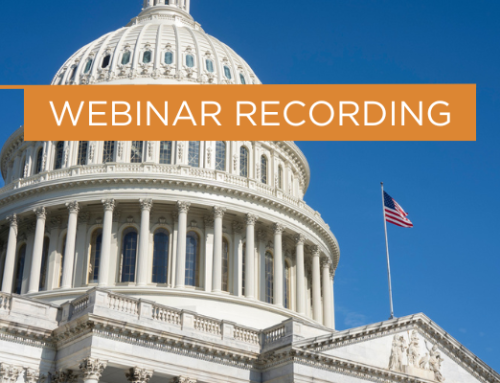Not-for-profit organizations hold millions of dollars in grants, endowments, and other funds that are necessary to keep the lights on and continue offering needed programming. Benchmarking against fiduciary best practices – both within the Investment Policy Statement (IPS) and the investment committee – helps to ensure that all those assets are carefully monitored throughout the year and in any market fluctuation.
Benchmarking the IPS
There are two common ways to define and measure success for an investment portfolio: relative benchmarks and absolute benchmarks.
Relative benchmarks compare the organization’s investment portfolio to an index or blend of indices. For example, a relative benchmark may compare fund performance against a blend of the S&P 500® and a bond market index.
Absolute benchmarks measure an actual rate of return and calculate performance against specific objectives. The IPS would need to define target annual rates for distribution, inflation, and fees. Investment returns would be measured against that calculation.
Not-for-profit organizations should exercise caution if their benchmarks compare performance against peers. This method has been shown to produce artificial performance metrics and often don’t consider unique circumstances.
Benchmarks should be reviewed at least annually.
Meeting long-term objectives is a balance between setting appropriate short- and long-term investment goals. According to Vanguard’s Nonprofit Toolkit, “Studies have shown that allocation across asset classes – stocks, bonds, and short-term reserves – far surpasses individual security selection or market-timing as the most important determinant of return variability and long-term total return.”
There are pros and cons to each method, and investment committees must use care when choosing the best approach for their organization and investment goals.
Investment Oversight Best Practices
When conducting a review of the investment policy statement, it’s also important to determine whether the investment committee itself is operating to a high standard. To that end, high-performing investment committees should be able to meet all the below benchmarks for fiduciary duties.
- Organizing the Committee
- The investment committee charter clearly defines roles and responsibilities.
- Committee documents describe the committee structure, composition, role, and purpose.
- A conflict-of-interest policy is present.
- Committee members are qualified, experienced fiduciaries and/or members receive adequate fiduciary training and support.
- All committee members participate in meetings.
- Meetings cover both administrative and investment-related aspects of the investment portfolio.
- Selecting and Evaluating a Manager
- A documented process for hiring, evaluating, and terminating managers is present.
- Committee members consider a manager’s style and investment philosophy to determine appropriate fit to the portfolio objective.
- Managers are evaluated and chosen based on several different criteria instead of simply past performance.
- Selecting and Evaluating Investments
- An appropriate investment strategy helps ensure portfolio objectives are achieved and assets are safeguarded.
- The portfolio has clear goals and defined metrics for success.
- The investment Policy Statement clearly describes the portfolio’s purpose and measures the committee’s progress toward reaching its goals.
- Investments are regularly evaluated according to whether they still fit with the organization’s goals and purpose.
- An asset allocation study is conducted at least once every three years.
- Reviewing Investment Costs
- Portfolio fees are assessed regularly.
- All portfolio fees are clearly disclosed.
- Manager fee structures are aligned with the portfolio’s goals and time horizons.
- Establishing Administrative Oversight
- Portfolio management processes conform with all written committee documents.
- The portfolio operates according to committee documents.
- All fiduciary, accounting, legal, and tax rules and regulations are followed.
- Appropriate forms and documents are filed with government and/or regulatory agencies in a timely manner.
- Current portfolio documents are maintained and reviewed regularly to ensure compliance with all relevant rules and regulations.
- Offering Fiduciary Education Resources
- Committee members are encouraged to obtain continuing education and training on relevant investment topics.
- Members are aware of upcoming institutional conferences.
- Members are aware of relevant and useful industry websites, publications, and organizations.
- Organizing Committee Meetings
- An agenda is provided for each meeting.
- A quorum is required at the start of each meeting.
- Minutes from the previous meeting are approved.
- Investment performance is reviewed at every meeting.
- Asset allocation is reviewed annually and decisions on whether to rebalance are made annually or every two years.
- Agenda items for subsequent meetings are explored.
- Portfolio risk is assessed annually.
- Regular meeting discussion points include regulatory changes, contractual vendor agreements, and ancillary asset pools.
According to Vanguard, fiduciary standards “[Provide] the financial resources necessary to maximize the welfare of your sponsoring organization’s mission.”
For more information about Not-for-Profit Investment Policy Statements or how to benchmark investment growth and progress, contact PBMares Partner Jonny Rosch, CPA.





